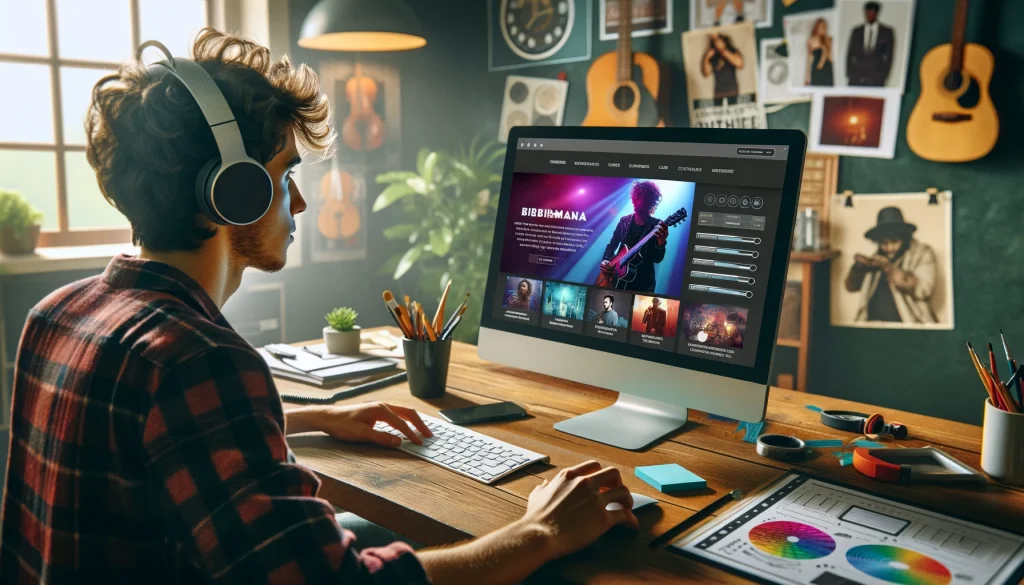Oftentimes, as part of an academic job, you’ll be asked to give a brief teaching demo. This is a part of the interview that often sinks candidates. Use these tips to help you prepare a solid teaching demo and avoid common pitfalls.
Picking the Topic
A topic will usually be assigned to you, but sometimes you’ll be given some leeway to pick any topic or pick any topic within a limited range (e.g., give a 20 minute teaching demo on opera). When given the choice to pick a topic, pick something that you can present quickly in a compelling way.
If you’re assigned a topic and it seems undoable in the time you have allotted, don’t worry; everyone will be subject to those same pressures, so just do the best you can in the time allotted. You can always announce at the end, what you’ll cover “next time” if there’s important material you want to recognize, but you don’t have time to address.
In some multi-stage interviews, you may be asked to present twice – for instance, a 20-minute demo for the hiring committee and a 10-minute demo for the school’s leadership. In general, even though the amount of time has changed, it’s best not to change your topic. Work to shorten your presentation while still showcasing your best teaching.
Framing the Material
If you’re given a topic that requires prior knowledge, you shouldn’t teach the prior knowledge, but you can acknowledge this by starting with a brief recap of what you discussed in past. This should be very quick, as the real meat of your presentation is what you’ve been asked to teach, which is still to come.
Similarly, at the end of your teaching demo, it’s good to leave times for a quick recap where you ask the students questions to check to see what they absorbed. It’s also a good time to mention what you’ll cover next and see if anyone has any final questions.
Technology
It’s great to use technology in teaching demos if you use it well. Check with the school in advance to see what technology will be available to you. This could include a piano, a marker board or chalkboard, a projector, a computer with PowerPoint, an A/V system to play audio or videos, etc. Ask about software too to see if they have PowerPoint, for instance.
Be sure to have multiple ways to quickly access the file. Have it on a thumb drive that’s PC and Mac compliant, email it to yourself, and have it available on a backup server, like Google Drive. Make sure you remember your passwords too, since it’s easy to forget a saved password, especially when you’re stressed during an interview. I also recommend converting it to a Google Slides presentation (double check all the layout, as some changes can occur in conversion) in case nothing else works.
Effective use of technology can be a big plus in your teaching demo, but ineffective use of technology can similarly be a major strike against you.
Presentation Tips:
- Minimize on-screen text. An effective PowerPoint won’t render you redundant; it’s just adding in audiovisual aids to complement what you’re saying.
- If you plan to include audio or video clips, embed them in the presentation instead of having to click out to YouTube. (Programs like Clip Grab can help you download videos for use in education.)
- Be sure to test how well they play on others’ computers, not just your own. Have backup audio and video files downloaded just in case embedded files don’t play. (YouTube videos can be taken down, so saved files are safer.)
- Don’t read off of your notes or your slides. Your job is to engage your audience; get rid of anything that stands in the way of that.
- Prepare giving the class, as you will in real life, and make sure it fits in the time allotted and that you’ve internalized the material well. You should know your presentation inside and out.
Quality Over Quantity
If there’s a piano in the room where you’re teaching, plan to use it if you’re a capable pianist. Even if you’re not a great pianist, playing some examples on the piano (like simple intervals or melodies) can show that you have the facility to use this important pedagogical tool. You can also bring your own instrument to demonstrate if you’d like.
The most common error applicants make in a teaching demo is sacrificing quality for quantity of teaching. Remember, you want to show that you’re an engaging and knowledgeable teacher, not how much you can cover in so brief a time. You’ll want to cover the topic given to you, but be sure to invest just as much in teaching in your best, most engaging way. Use active learning strategies and get your class to engage with you.
Be careful to teach at the right level too. You may be tempted to dumb down your material for a lay audience (you never know who will be on your committee), but if it feels like you’re teaching at a pre-collegiate level, that can be a serious strike against you. So, tread the careful balance between making it understandable, but not simplistic.
Most hiring committees will make a determination about the quality of your teaching in the first few minutes. They may change or refine their decision after that, but they will be naturally biased toward or against you after the first few minutes of your lesson. As a result, quality matters right from the start.
Customize Your Lesson
If you’re given 20 minutes for a teaching demo, don’t teach the first 20 minutes of a longer lesson. You’ll want to custom-make a teaching demo for this, so that the length is right, you cover the topic requested (or the one you choose, where applicable), and you do so in an engaging way that shows off your best teaching.
Private Lesson Demonstrations
If you teach a private lesson demo, don’t hesitate to take the first minute to get to know the student. Asking questions about them and their goals not only helps you better customize the lesson; it shows that you’re invested in students’ lives and success. You’d likely do this in your private studio anyhow, so let the hiring committee see you demonstrate this. Be yourself and engage the student. No one expects a full lesson in so short a time, but they’ll be looking to see if you can diagnose problems well, address them quickly, and do so in a way that keeps the student engaged and challenged, but encouraged. Covering one or two things well is better than rushing through a larger number.
DOs and DON’Ts
- DON’T use WORD or other word processing software for projected displays. Use PowerPoint or similar software, or just show pictures and videos as needed.
- DO use active learning strategies to engage your students (or the committee, if they’re serving as your class).
- DON’T try to to cram in everything about a topic; there isn’t time and it won’t be your best teaching if you’re rushing.
- DO make time for Socratic questioning and checking in with students for understanding.
- DON’T use off-color humor (though humor, in general, can be great), expletives, references to politics or sex, or language suggesting poor boundaries (e.g., talking about your love life). Religion is best avoided too, unless it’s relevant to what you’re teaching (like discussing the Catholic Church in early music).
- DO be prepared for the fact that the committee may not engage much if they’re acting as your students. Still put forward your best energy and try to draw them in to discussion. If you get a committee like this, as a last resort, have a backup plan to engage them in an activity that doesn’t require volunteers answering questions.
- DON’T give a straight lecture; engaging your students is more important than sharing information.
- DO think of yourself as a story teller in the more lecture-based parts of your lesson; when it’s just you talking, you need to be especially engaging.
- DON’T forget to include music or aural demonstrations. It’s a music class, so you want to show that you don’t lose track of the importance of connecting with the material through listening.
- DO consider diversity in choosing your images, videos, and musical examples. Consider including musical examples not just from Western concert music, but also popular music of differing genres and world music. Think about diversity in stock photography and examples too. For instance, if you use an image of a conductor, consider using a female conductor or a person of color. This is especially important if you’re applying to a school whose population is diverse; students should ideally see people that look like them represented in your class.
- DON’T teach to an imagined class of students unless you’re asked to. Teach to the people in the room and engage them as you’d engage a class of students. If you ask questions and get the wrong answers, show them how you handle that in a real class: be encouraging, acknowledge where they’re partially right, and help redirect them toward a more accurate response.
Comments?
Please share comments or thoughts about this topic below. What have you learned from past teaching demos? I may revise the post to reflect questions or suggestions.











0 Comments